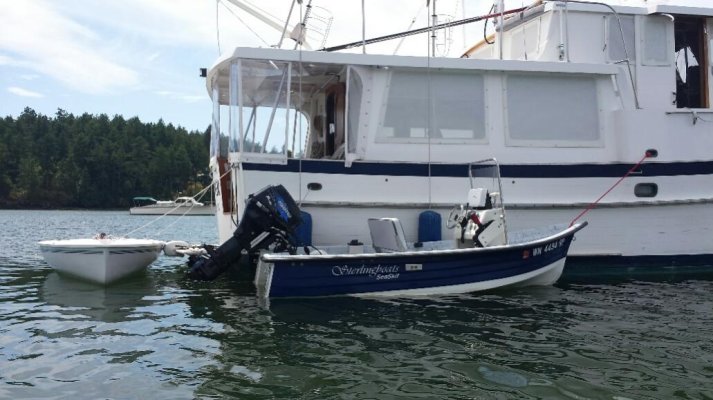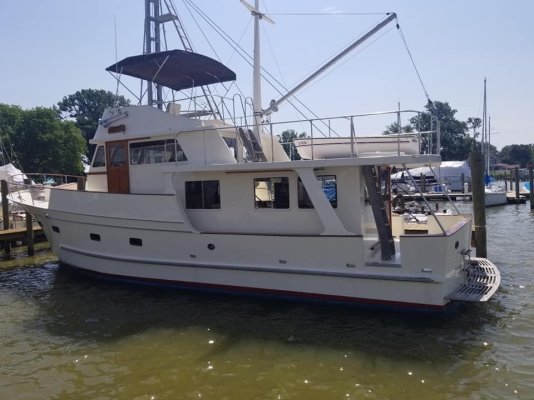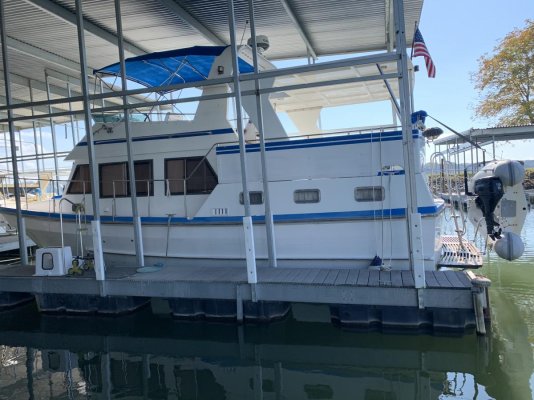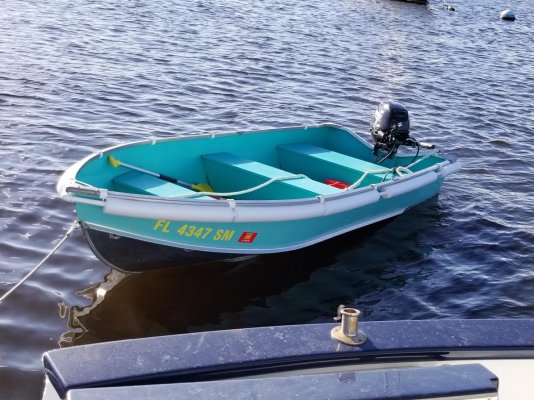Those of you that have transom or stern mounted dinks explain the following please
visibility when backing into a slip

Pay more for a dock due to added length
Following seas
Sitting in cockpit looking aft

Getting on/off boat
How about simply how it looks

Lipets,
On our boat, visibility when backing with the dinghy on the stern is very good with the possible exception of the last couple of feet of dock space. For us the pilot can look out the side deck and see very well, as well, the "docking partner" would be at the stern giving directions via wireless headset. Therefore, no issue that can't be overcome.
The dinghy mounted this way adds about 1.5 to 2 feet to the LOA, not a biggy, and would certainly not be a make or break as far as boat expenses go.
So far the dinghy has been no issue at all in following seas. However, we are coastal cruisers and will not be going off shore, such as down the west coast to Mexico, therefore not a real issue for us IMO. We have been out in 2-3 meter seas and everything was fine in that regard.
When sitting in the cockpit, it can block some of the view. Solution, deploy it (in about 2 minutes with minimal effort) and it is out of the way!!

Getting on and off the boat. With our setup we have almost the full width of the swim grid to work with and can exit very easily to starboard which is the side we dock to 98% of the time. At anchor, just deploy if the full swim grid is needed. If does however, stop you from "just walking" straight off the back. If that is desired, deploy the dinghy and tie it along side, or in front of your boat.
Look is simply a personal preference and to each his own. I find some boats are more attractive than others

Also as time goes on, a person can get used to almost anything in that regard.
As to the name and port thing, we have the boat name and port (vinyl decal) on the bottom of the RIB dinghy, so no issue there either.
For the OP, as far as the weight issue of the Seawise parts, not really that big of a deal. Yes a few pounds of added weight, but less than adding a crane up top. However, you are correct, the Seawise is not cheap!!

All davit systems (even towing a dinghy) have their pros and cons (just like boats). We feel that our setup provides great convenience and ease of use and to us, therefore the positives far outweigh the negatives.




 Also as time goes on, a person can get used to almost anything in that regard.
Also as time goes on, a person can get used to almost anything in that regard.


